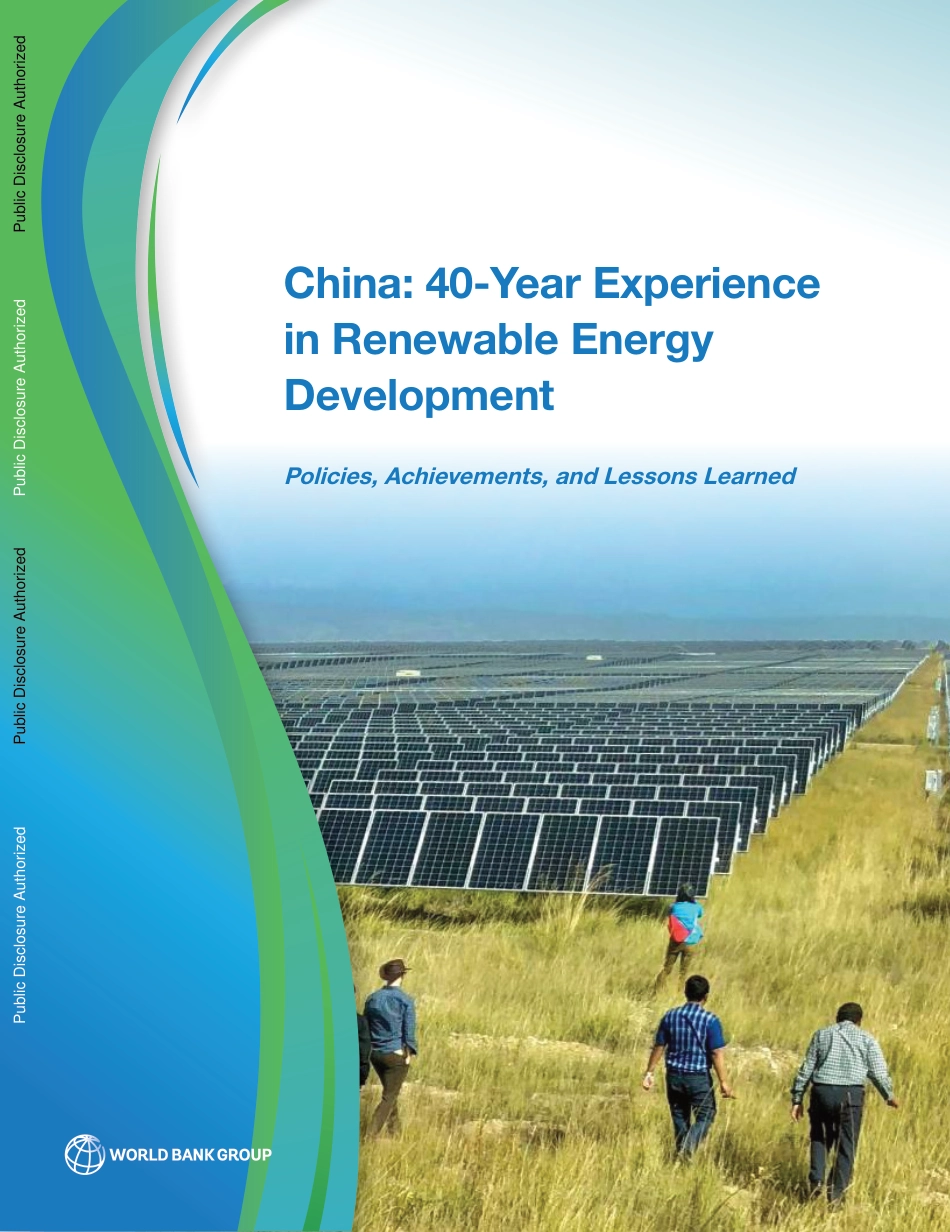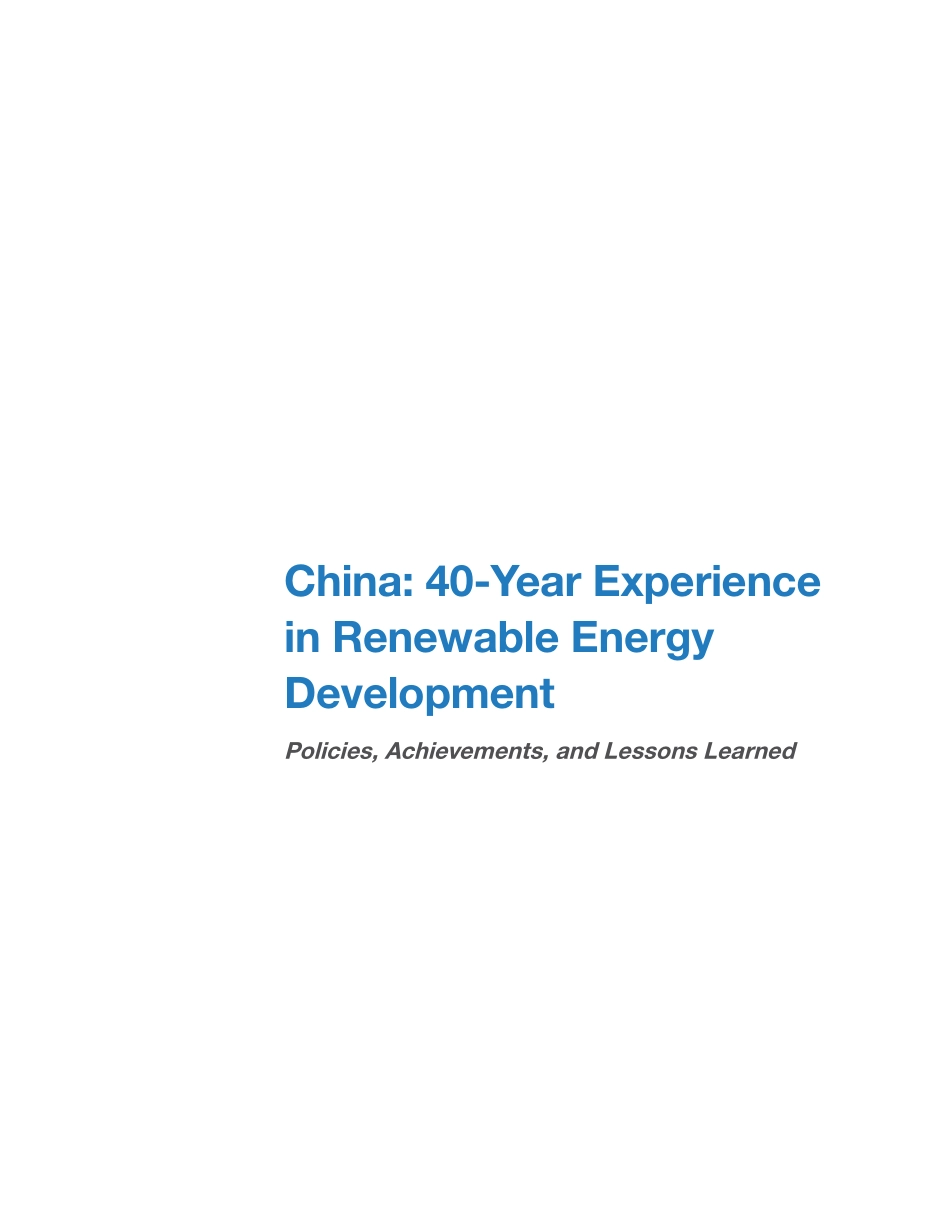China: 40-Year Experience in Renewable Energy DevelopmentPolicies, Achievements, and Lessons LearnedPublic Disclosure AuthorizedPublic Disclosure AuthorizedPublic Disclosure AuthorizedPublic Disclosure AuthorizedbPhoto credits. Front Cover: Christophe de GouvelloPolicies, Achievements, and Lessons LearnedChina: 40-Year Experience in Renewable Energy Development© 2021 International Bank for Reconstruction and Development / The World Bank1818 H Street NWWashington DC 20433Telephone: 202-473-1000Internet: www.worldbank.orgThis work is a product of the staff of The World Bank with external contributions. The findings, interpretations, and conclusions expressed by World Bank Staff or external contributors in this work do not reflect the views of The World Bank, its Board of Executive Directors, or the governments they represent. The World Bank does not guarantee the accuracy of the data included in this work. Rights and PermissionsThe material in this work is subject to copyright. Because The World Bank encourages dissemination of its knowledge, this work may be reproduced, in whole or in part, for noncommercial purposes as long as full attribution to this work is given.Attribution—Please cite the work as follows: Ch. de Gouvello (co-ord.), N. Berrah, LI Jufeng, Y. Song, et al., 2021. China: 40-Year Experience in Renewable Energy Development. Policies, Achievements, and Lessons Learned. The World Bank, Washington, DC.All queries on rights and licenses should be addressed to the Publishing and Knowledge Division, The World Bank, 1818 H Street NW, Washington, DC 20433, USA; fax: 202-522-2625; e-mail: pubrights@worldbank.orgIAbbreviations ...................................................................................................................



